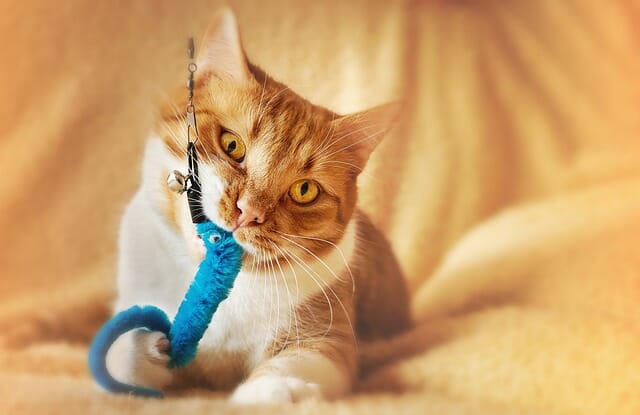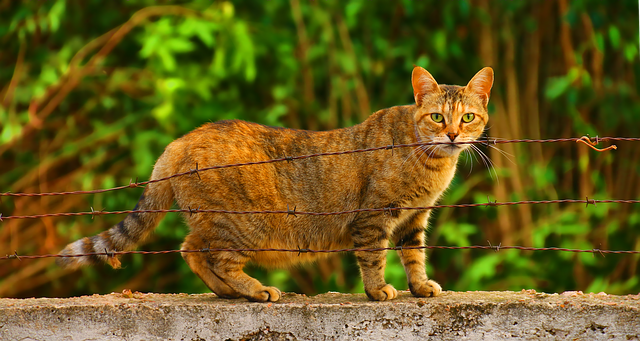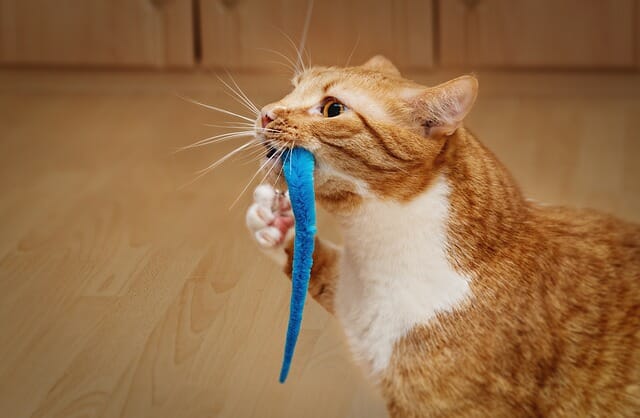How to Give a Cat Catnip: Types of Catnips and Tips for Giving It
Catnip can be given to cats in a few different ways. Here are some methods:
- Fresh Catnip: If you can access fresh catnip, you can give it to your cat by simply giving them the leaves or stems to chew on or play with. Fresh catnip can be more potent than dried catnip and have a stronger effect on some cats.
- Dried Catnip: Dried catnip is more readily available and can be found in pet stores or online. You can sprinkle a small amount of dried catnip on a toy, scratching post, or directly on the floor for your cat to play with.
- Catnip Toys: Catnip toys are a popular option for providing cats with stimulation and enjoyment. These toys are usually stuffed with dried catnip and can be a fun way for cats to play and engage with the scent and texture of the catnip.


Table of Contents
Tips for Giving Catnip
- Start with a small amount: It’s important to start with a small amount of catnip and gradually increase it if necessary. This can help to prevent your cat from becoming overstimulated or having an adverse reaction.
- Monitor your cat’s behavior: Keep an eye on it after giving them catnip to ensure they’re not exhibiting any unusual or concerning symptoms. If your cat seems overly agitated, restless, or shows any signs of distress, it’s best to stop giving them catnip and contact your veterinarian.
- Use catnip in moderation: While catnip is generally considered safe for cats, it’s important to use it in moderation. Giving your cat too much catnip can cause adverse effects such as vomiting or diarrhea.
- Keep catnip fresh: If you’re using fresh catnip, store it in an airtight container in the refrigerator to keep it fresh. Dried catnip should also be stored in a cool, dry place to maintain potency.
- Offer catnip as a treat: To prevent your cat from becoming desensitized to catnip, it’s best to offer it as a special treat rather than regularly.
- Use catnip as a training tool: Catnip can be used as a reward for positive behavior or to encourage your cat to use a scratching post or other designated area. This can reinforce good behavior and make training more effective.
- Some cats may not respond to catnip: While many cats enjoy the effects of catnip, not all cats will react. Some cats may not show any interest in catnip at all.
- Catnip effects are temporary: The effects of catnip usually wear off after a few minutes, and your cat may lose interest in the catnip toy or lose the playful behavior it was displaying.
- Watch for overstimulation: Some cats can become overstimulated when exposed to catnip, leading to excessive meowing, scratching, or aggressive behavior. If your cat shows any signs of distress, stop giving them catnip and contact your veterinarian.
- Avoid giving catnip to kittens: Kittens under six months of age may not respond to catnip, and their nervous systems are still developing, so it’s best to avoid giving them catnip until they’re older.
- Please clean up after using catnip: Catnip can be messy, so cleaning up after your cat has played with it is important to avoid any stains or odors.
Types of Catnip
Common Catnip (Nepeta Cataria)


Common catnip, also known as Nepeta cataria, according to Encyclopedia Britannica, is a plant that is native to Europe and Asia but is now found in many parts of the world. It is a member of the mint family and contains a chemical compound called nepetalactone responsible for its effects on cats.
When cats are exposed to common catnip, they may exhibit a range of behaviors, such as rolling, rubbing, and licking the plant, as well as increased playfulness and vocalization. The effects of catnip usually last for a few minutes, after which the cat may lose interest or become more relaxed.
In addition to its effects on cats, common catnip has been used in traditional medicine for its soothing and pain-relieving properties. It can also be used to make herbal tea, which is said to have a calming effect on humans.
Silver Vine (Actinidia Polygama)
Silvervine, also known as Actinidia polygama or matatabi, is a plant native to the mountainous regions of Japan and China. It is a member of the kiwi family and has been found to have a similar effect on cats as catnip.
When cats are exposed to silver vines, they may exhibit a range of behaviors, such as rolling, rubbing, and licking the plant, as well as increased playfulness and vocalization. The effects of the silver vine can last longer than those of catnip, with some cats remaining stimulated for up to 30 minutes.
Tatarian Honeysuckle (Lonicera Tatarica)
Tatarian honeysuckle, also known as Lonicera tatarica, is a deciduous shrub that is native to Asia and Europe but is now found in many parts of the world. It contains a chemical compound called actinidine, similar to nepetalactone, the compound found in catnip, and can have a similar effect on cats.
If you plan on using Tatarian honeysuckle with your cat, using it in moderation and under supervision is important. While it is generally considered safe, giving your cat too much Tatarian honeysuckle can cause vomiting, diarrhea, or other adverse effects. It’s also important to remember that not all cats will respond to Tatarian honeysuckle; some may be more sensitive than others.
Valerian Root (Valeriana Officinalis)


Valerian root, also known as Valeriana officinalis, is a perennial flowering plant that is native to Europe and Asia but is now found in many parts of the world. It has a strong, musky scent that is attractive to some cats and can have a calming effect on them.
When cats are exposed to valerian root, they may exhibit a range of behaviors, such as rubbing, rolling, and drooling, as well as increased relaxation and sleepiness. The effects of valerian root can last longer than those of catnip, with some cats remaining calm and relaxed for up to a few hours.
Lemongrass (Cymbopogon Citratus)
Lemongrass, also known as Cymbopogon citratus, is a herbaceous plant that is native to tropical regions of Asia and is now widely cultivated in other parts of the world. While lemongrass is not as well-known for its effect on cats as catnip or valerian root, some cats may still find it appealing and stimulating.
When cats are exposed to lemongrass, they may exhibit behaviors such as rubbing, rolling, and licking the plant. Lemongrass has a fresh, citrusy scent that is pleasing to some cats and may also have mild insect-repellent properties.
In addition to its potential effects on cats, lemongrass is also used in traditional medicine for its anti-inflammatory, antibacterial, and antifungal properties. It can also be used to make herbal tea or as a cooking flavoring.
